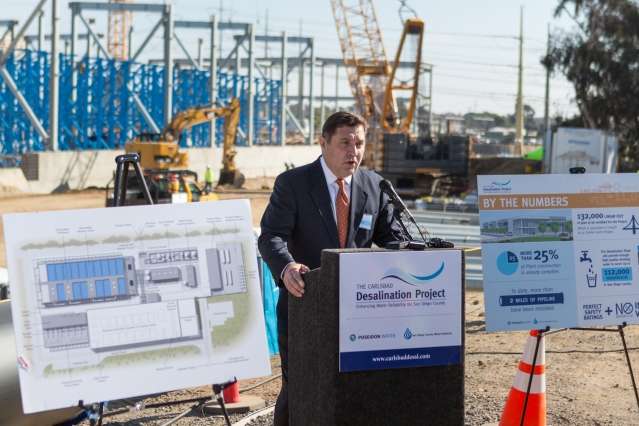Using desalination to address drought

"It's a very interesting time in the water industry," says Carlos Riva '75, CEO of Poseidon Water, a company that is drawing attention as it develops, in Southern California, what will be the largest seawater desalination plant in the Western Hemisphere. The project is expected to deliver water to parched businesses and residents in San Diego County, where there is a drought state of emergency, when it comes online late in 2015.
Poseidon's involvement is unusual because most of the water agencies in the United States are public utilities managed by government agencies. "There hasn't been a lot of involvement of the private sector in developing water projects," Riva says. As a result, "our work has attracted attention, not just from people interested in what's being done to address [California's] drought, but also from municipal agencies around the country that see this as a potentially different model for supplying their communities with water."
While Riva is excited about the many innovations related to water currently being developed at institutions like MIT, he notes the difficulty in getting that technology out of the lab and into the real world. That's where the private sector could help, he says. Companies like Poseidon "are in a position to push forward the adoption of these technologies to really make a difference in terms of the overall water supply."
An industrial developer focused on water treatment for industrial or municipal uses, Poseidon, headquartered in Boston, does everything from determining the location of a project to securing the permitting and, ultimately, putting in place contracts to sell the resulting water. The company also manages construction of the necessary infrastructure, and then forms an operational team that may run the project for the life of a plant. Or, at some point, it might turn it over to a municipal entity.
Riva notes that in many parts of the world, traditional sources of water such as lakes and underground reservoirs "have been pretty much tapped out, or spoken for, because they are the most accessible." That means "there's an opportunity to develop new strategies and new sources around water," says Riva, from better conservation to the use of treated wastewater and seawater desalination. "I think the solutions to the problems of water scarcity are going to involve an 'all of the above' strategy."
Provided by Massachusetts Institute of Technology
This story is republished courtesy of MIT News (web.mit.edu/newsoffice/), a popular site that covers news about MIT research, innovation and teaching.


















